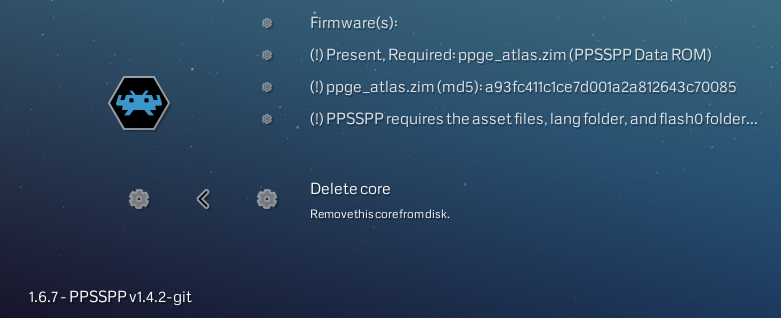

A project designed to enhance Silent Hill 2 (SH2) graphics and audio for the PC.
#Retroarch ppsspp cannot load save or state full#
Lakka is a lightweight Linux distribution that transforms a small computer into a full blown game console. Feel free to contibute and help this community grow!
#Retroarch ppsspp cannot load save or state psp#
We are building a list with every PSP game compatible with Anbernic's RG351P. Emulation Station is a flexible emulator front-end supporting keyboardless navigation and custom system themes. A Fork of Emulation Station for RetroPie. Handheld firmware optimized for the Anbernic RG351P/M/V devices. Fast PlayStation 1 emulator for x86-64/AArch32/AArch64 Thanks, I'm kind of new to this emulating stuff. Anyhow, this is the message I get in my console when I try to load the save state. I looked at the save state folder and the save state is there but I guess it's not loaded in to the slot properly or something. When comparing RetroArch and ppsspp you can also consider the following projects: When I booted up PCSX2 today it made me put my bios back in manually. what make ac3 better than rest of ace combat games ?.dolphin ( ) and ppsspp ( ) had been hitting the same issue and adopted mono's fix, PPSSPP hadn't been able to find the root cause so they'd originally implemented a gnarly hack by adding a bunch of padding ( ).īut fundamentally this is the 8890 being broken: as the Mono post notes, technically nothing precludes core migration in the middle of clearing the cache, which would also lead to broken behaviour, with no mitigation. Glibc's `_clear_cache` would cache the cacheline size on first call, so if the program was started on a big core then migrated onto a little core it would only flush every other cacheline.Īnd the mitigation was not to "change its allocation", it was to bypass libgcc and handroll cache clearing: Īnd this issue didn't only affect Mono, it affected pretty much any JIT running on that phone e.g. It was a bit more complicated than that: the issue was that one of the early big.LITTLE designs (Samsung's Exynos 8890) had different cacheline sizes on the big and little cores.


 0 kommentar(er)
0 kommentar(er)
